Chaenactis xantiana, Fleshcolor Pincushion
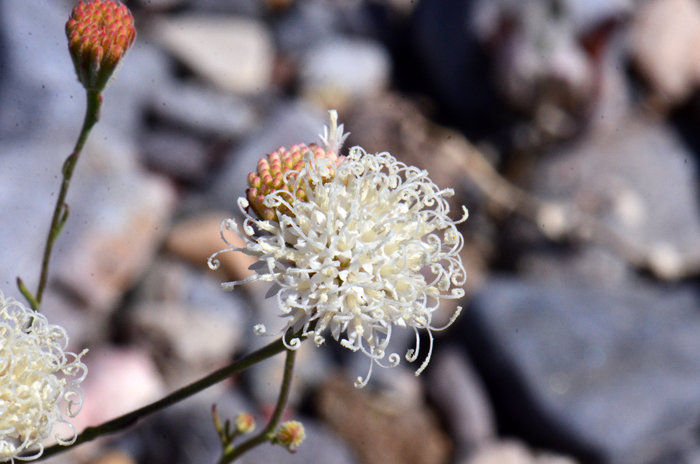
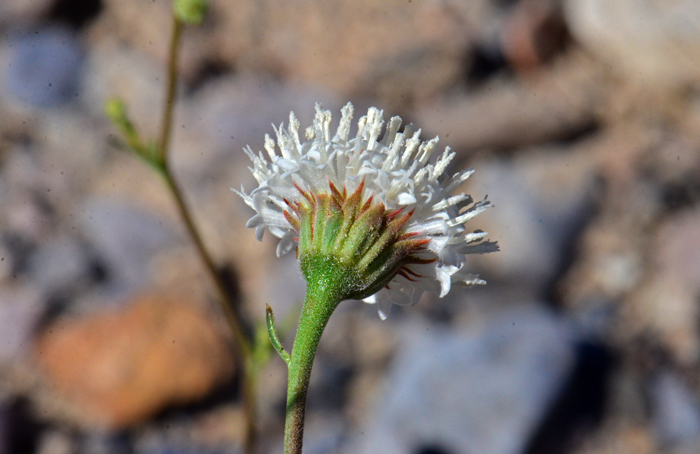
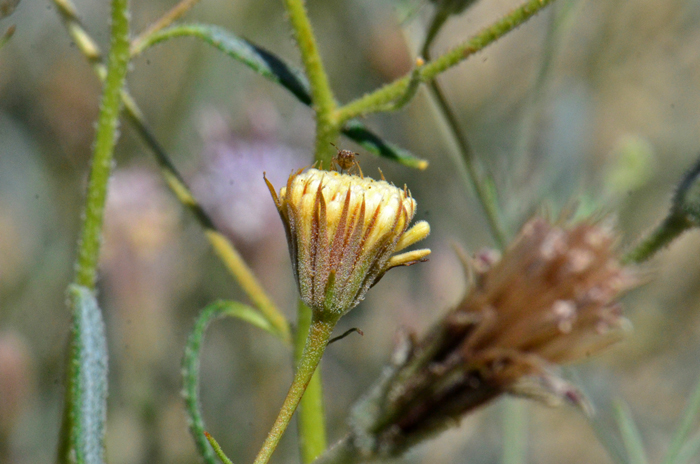
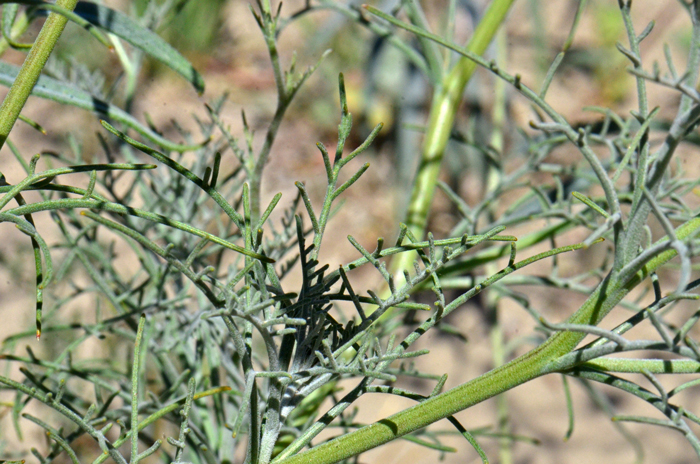
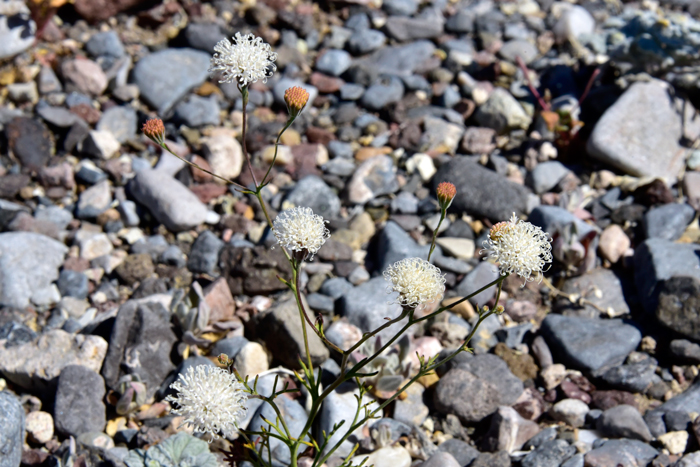
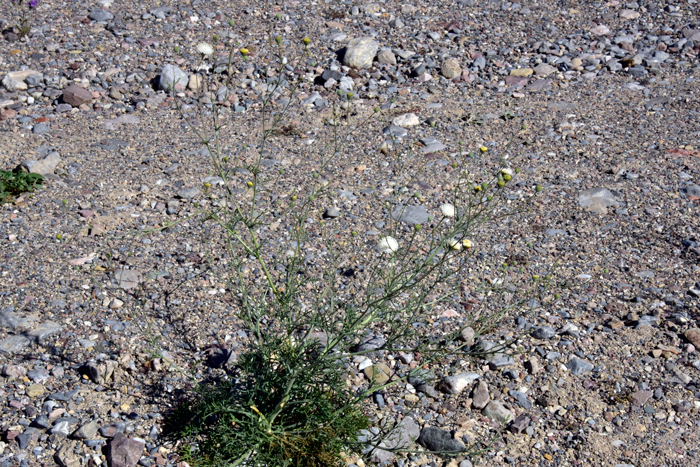
Scientific Name: Chaenactis xantiana
Common Name: Fleshcolor Pincushion
Also Called: Fleshy Pincushion, Mojave Pincushion, Xantu's Pincushion, Xantus Pincushion
Family: Asteraceae, Sunflower Family
Synonyms: ()
Status: Native
Duration: Annual
Size: 4 to 16 inches (10-40 cm;) tall.
Growth Form: Forb/herb; 1 to 5 (12) stems, young plants glabrescent, mostly glabrous at flowering.
Leaves: Green; somewhat succulent, basal leaves withering at flowering; cauline leaves 0 to 1 pinnately lobed, lobes are in 1 to 3 (5) pairs, leaves spirally on flowering stems; leaves finely flecked with white scales which views as a grayish hue.
Flower Color: White; 1 to 5 (7) discoid heads; corollas diurnal, whitish to pinkish, outer corollas erect to ascending; fruit a cypsela (mistakenly referred to as an achene).
Flowering Season: April to June or March to July in California; April through July in Texas.
Elevation: 1,000 to 3,500 feet (300-1,066 m)
Habitat Preferences: Open loose sandy soils, often in burns, dry and semi-dry shrublands, chaparral.
Recorded Range: Found mostly in the southwestern United States in AZ, CA, NV, OR.
North America & US County Distribution Map for Chaenactis xantiana.
North America species range map for Chaenactis xantiana:
North American range map courtesy of Virginia Tech, Dept. of Forest Resources & Environmental Conservation
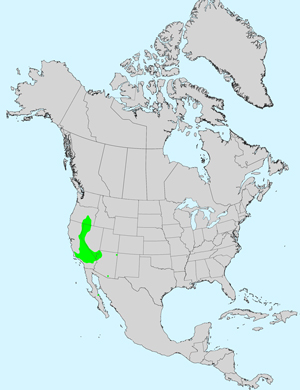
U.S. Weed Information: Unknown
Invasive/Noxious Weed Information: Unknown
Wetland Indicator: Unknown
Threatened/Endangered Information: Unknown
Genus Information: In North America there are 17 species and 17 accepted taxa overall for Chaenactis. Worldwide, The Plant List includes 19 accepted species names and a further 55 scientific names of infraspecific rank for Chaenactis.
Members of Chaenactis are commonly referred to as “pincushions” or “dustymaidens”.The genus Chaenactis was published in 1836 by Augustin Pyramus de Candolle.
In the Southwestern United States: Arizona has 6 species of genus, California has 13 species, Nevada has 8 species, New Mexico has 3 species, Texas has 0 species, Utah has 5 species. All data approximate and subject to revision.
Comments: Fleshcolor Pincushion is very similar in appearance to Esteve Pincushion, Chaenactis stevioides. is named in honor of John Xantus de Vesey (1825–1894) Hungarian exile and zoologist.In Southwest Desert Flora also see: Esteve’s Pincushion, Chaenactis stevioides, Pebble Pincushion and Chaenactis carphoclinia var. carphoclinia.
The genus Chaenactis was published in 1836 by Augustin Pyramus de Candolle.
The species epithet xantiana (xan'ti/xantia'na:) is named in honor of János (John) Xántus (1825-1894), a Hungarian exile and zoologist who collected in California and Baja.

